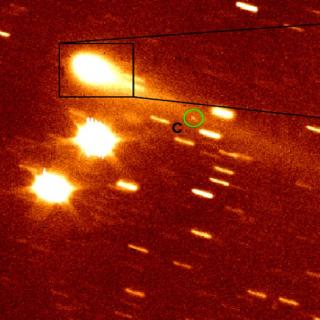Bowles, N. E.; Snodgrass, C.; Gibbings, A.; Sanchez, J. P.; Arnold, J. A.; Eccleston, P.; Andert, T.; Probst, A.; Naletto, G.; Vandaele, A. C.; de Leon, J.; Nathues, A.; Thomas, I. R.; Thomas, N.; Jorda, L.; Da Deppo, V.; Haack, H.; Green, S. F.; Carry, B.; Donaldson Hanna, K. L.; Leif Jorgensen, J.; Kereszturi, A.; DeMeo, F. E.; Patel, M. R.; Davies, J. K.; Clarke, F.; Kinch, K.; Guilbert-Lepoutre, A.; Agarwal, J.; Rivkin, A. S.; Pravec, P.; Fornasier, S.; Granvik, M.; Jones, R. H.; Murdoch, N.; Joy, K. H.; Pascale, E.; Tecza, M.; Barnes, J. M.; Licandro, J.; Greenhagen, B. T.; Calcutt, S. B.; Marriner, C. M.; Warren, T.; Tosh, I.
Bibliographical reference
Advances in Space Research, Volume 62, Issue 8, p. 1998-2025.
Advertised on:
10
2018
Journal
Citations
23
Refereed citations
18
Description
CASTAway is a mission concept to explore our Solar System's main
asteroid belt. Asteroids and comets provide a window into the formation
and evolution of our Solar System and the composition of these objects
can be inferred from space-based remote sensing using spectroscopic
techniques. Variations in composition across the asteroid populations
provide a tracer for the dynamical evolution of the Solar System. The
mission combines a long-range (point source) telescopic survey of over
10,000 objects, targeted close encounters with 10-20 asteroids and
serendipitous searches to constrain the distribution of smaller (e.g. 10
m) size objects into a single concept. With a carefully targeted
trajectory that loops through the asteroid belt, CASTAway would provide
a comprehensive survey of the main belt at multiple scales. The
scientific payload comprises a 50 cm diameter telescope that includes an
integrated low-resolution (R = 30-100) spectrometer and visible context
imager, a thermal (e.g. 6-16 μm) imager for use during the flybys,
and modified star tracker cameras to detect small (∼10 m) asteroids.
The CASTAway spacecraft and payload have high levels of technology
readiness and are designed to fit within the programmatic and cost caps
for a European Space Agency medium class mission, while delivering a
significant increase in knowledge of our Solar System.
Related projects

Small Bodies of the Solar System
This project studies the physical and compositional properties of the so-called minor bodies of the Solar System, that includes asteroids, icy objects, and comets. Of special interest are the trans-neptunian objects (TNOs), including those considered the most distant objects detected so far (Extreme-TNOs or ETNOs); the comets and the comet-asteroid
Julia de
León Cruz